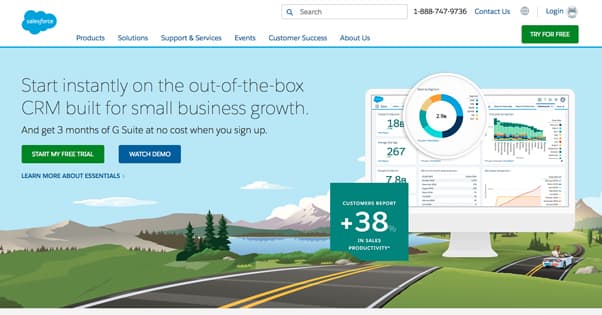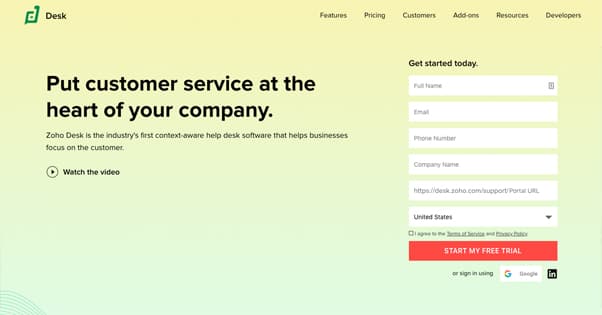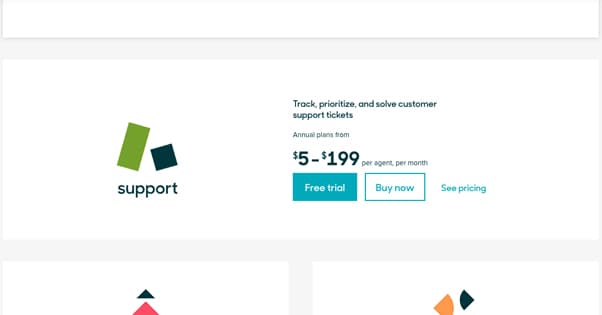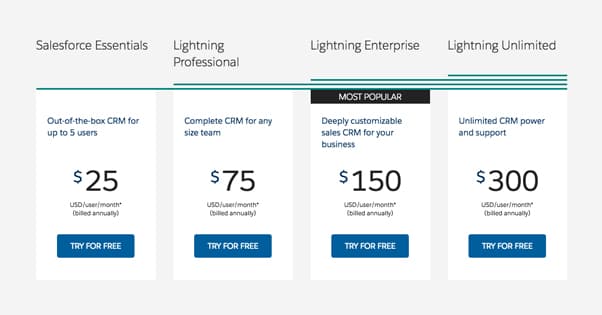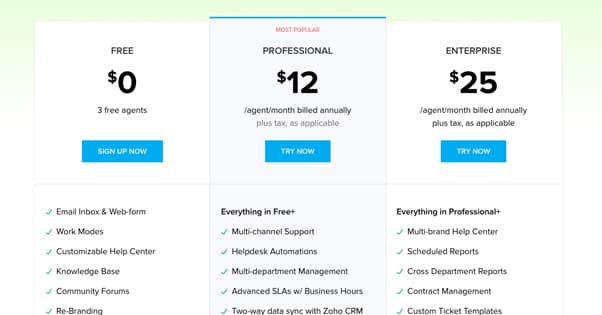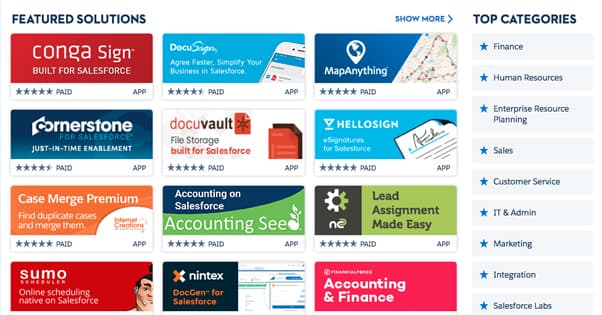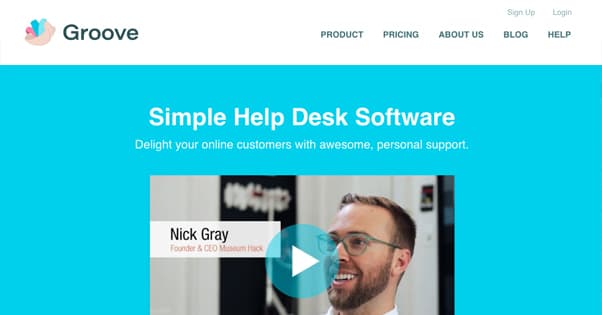Zendesk vs Salesforce vs Zoho Desk: Which is The Best?
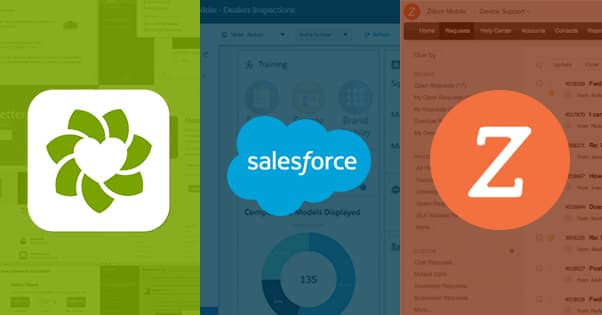
When considering buying into a help desk application or another business-critical platform, you need to do your research. These kinds of systems are usually a gigantic pain in the ass to migrate once you’ve invested in one, unless you happen to be coming from a system that your new system explicitly targets with an automatic conversion process. Even then, you have the issue of employee training and adoption, customizations, and who knows what random bugs that might crop up.
Let’s compare three of the biggest options, with some honorable mentions, and see which might be best for you. As you might have guessed from the title, I’m looking at Zendesk, Salesforce, and Zoho today.
Products and Features
First, let’s talk about the available products from each company. These three services are not strictly comparable, and in some ways are even complimentary, but you’re pretty unlikely to invest in more than one. So what does each one have to offer?
Zendesk is first up. They offer six individual products: Support, Guide, Chat, Talk, Connect, and Explore.
- Support is an integrated customer support dashboard you’ve probably seen used by a variety of businesses and a ton of gaming companies.
- Guide is a knowledge base program often used for both internal knowledge bases and external FAQ documents.
- Chat is a live chat and messaging system that can be used for customer support and sales.
- Talk is an app specifically designed for call center tracking and management, including KPI tracking.
- Connect is a linked customer profile platform that tracks a variety of data points and can build action flows, customer profiles, and ticket tracking.
- Explore is an analytics suite that aggregates data from a variety of sources and helps you keep track of your business in general.
Additionally, Zendesk offers the Zendesk Suite, which is Support, Guide, Chat, and Talk all wrapped up into one package with integrations already in place upon installation.
Salesforce is one of the bigger names in business management and is often viewed as an enterprise-level piece of software, though it works for businesses of almost all sizes. They offer quite a few apps as well.
- Sales, which is a general sales tracking and lead follow-up platform used by sales teams of all sizes.
- Service, which is a customer service and help desk platform.
- Marketing, which is a general engagement and outreach platform similar to something like Hubspot.
- Commerce, which is an e-commerce platform manager that unifies various means of purchasing into one experience.
- Communities, which is a handful of related apps for building customer communities, both on local forums and social media.
- Quip, which is a team management app meant for internal workflow and productivity.
- Industries, which has several related apps for specific industry needs. These include specialized apps for financial services, health and hospital operations, government of all levels, and philanthropic ventures.
- Mulesoft, which includes a bunch of connectivity apps that sit between other apps and facilitate the transfer of data and API usage.
All of these are actually individual platforms. For example, under the Sales Cloud, Salesforce offers their CPQ app for price and quote generation, Pardot for B2B automation, Inbox for email management and productivity, Essentials with a series of features for small businesses, Cloud Einstein with CRM artificial intelligence, Lightning Dialer for click-to-call features, Mobile for mobile app compatibility, and App Exchange for adding even more features. There’s actually a ton going on.
Zoho, next up, bills itself as an “operating system for business”. No, it doesn’t replace Windows or Linux or OSX; it’s a series of apps that help manage business processes. They have over 40 apps, some of which include:
- Sales and marketing apps such as Sign for online document signing, Survey for customer surveys, Motivator for sales activity management, and Social for social media management.
- Financial bookkeeping apps such as Invoice, Inventory, Subscriptions, and Checkout, all of which have very self-explanatory names.
- Email and collaboration apps including Writer for word processing, Sheet for spreadsheets, Meeting for calendar and meeting management, and Vault, a password manager for teams.
- Helpdesk features through Mobile Device Management, as well as ServiceDesk Plus, a customer service platform. Zoho Desk is what you’ll be looking for.
Additionally, they have a human resources platform and an app creator that lets you create something custom for your own office needs.
Verdict: any of them! Frankly, no matter what size business you’re running or what your needs are, you’ll be able to put together something with all three of these platforms. They offer so much in such wide variety that you can do basically anything.
Personally, I find Salesforce to be the most complex and therefore least approachable of all three, from a self-service perspective. I guarantee that all three of them have sales teams more than happy to work with you to put together a portfolio of apps to accomplish everything you need, though, so that isn’t necessarily a problem.
Pricing
To a certain extent, it always comes down to price. With so much flexibility, you can guarantee that all three of these platforms will vary wildly depending on your needs, but it’s still worth a look.
Zendesk pricing is fairly simple. The full Zendesk suite will cost you $89 per seat per month, which can add up quite quickly. Support ranges anywhere from $5 to $200 per agent per month, with similar spikes. Guide, Chat, and Talk all have free basic plans and range from $29 to $89 per agent per month depending on your needs as well. You could be looking at anywhere from $50 per person per month to a figure in the thousands, depending on your needs. Bear in mind that every individual app has its own pricing tiers with its own feature restrictions, all per person per month.
Salesforce has a million individual apps and thus a million different potential price points. For example, their “sales and service” package includes a dozen different features and ranges from $100 per user per month up to $325 for the same. Their Lightning platform starts at $25 per user per month and scales infinitely depending on your needs. Many of their apps and platforms are much more expensive, so much so that they hide their pricing from public view and require you to contact them for a quite. Which, of course, puts you into their sales funnel, where you’ll be bombarded with high-pressure calls, emails, and contacts from their team.
Zoho has a similar range of pricing. CRM starts at $12 per user per month for 10 of their features, including sales forecasting, roles and profiles, call center management, and workflows, and has additional plans for $20, $35, and $100 for further features. Other apps have other prices ranges, some a bit cheaper and some a bit more expensive. As with the other platforms, pricing really depends on your needs, the number of employees, and how much your budget can flex.
Verdict: Who knows! Pricing for these are all more or less comparable. Zoho has a few services on offer quite cheap, but Zendesk tops them both with some free options for small teams and self-serve features. No matter which you choose, you’ll be spending more and more the more employees you have using the system and the more features you need.
Common Reviews
Now let’s talk about public perception. Public reviews can only give you so much of a picture of what using the platform will be like, and as always, you’ll tend to find more complaints than glowing praise. There’s never a guarantee that a negative point made by a reviewer will apply to you.
Zendesk has a few positives. They are both PCI and HIPAA compliant, if those are relevant to your business. They integrate with over 700 different apps and platforms, including Salesforce. They’re used by numerous massive enterprises, including Shopify and Uber. They also have around-the-clock support available.
On the other hand, Zendesk can be challenging to set up and they lack a lot of customization options the other two platforms have. If you’re using Zendesk, it’s easy for a user to tell that you’re using Zendesk. This is both good and bad; anyone familiar with it will be right at home, but no one should need support often enough to be familiar with it. Zendesk also lacks a built-in library for asset management. You need an additional app for that.
Salesforce is the more “corporate” of the three, with a reputation for being a platform only the big players use. The labyrinth of features and products on offer helps keep this illusion by making it impenetrable to someone who doesn’t already know what it all means and, more importantly, what they need.
Like Zendesk, Salesforce is both PCI and HIPAA compliant and includes 24/7 support. It integrates with a bunch of other apps as well, though it’s more accurate to state that other apps integrate with it. Their reporting is top notch.
On the down side, Salesforce is easily the most expensive of the three options, and can be a pain to set up. It has a steep learning curve, and it’s often difficult to determine if a user simply doesn’t know how to do something, or if a glitch is causing a process to not work at all.
Zoho is the most affordable of the three, and includes more multi-channel support by default than the others. It is not by default compliant, however, and does not put additional emphasis on security like Zendesk.
Zoho has some very nice integrations, including coming packaged with GSuite, making it very easy to continue using Google apps alongside their platform. Unfortunately, the platform can be difficult to configure and it feels clunky to use. You can’t duplicate tickets with the help desk software, and it lacks asset management.
Verdict: Up to you! At the end of the day, all three platforms are roughly comparable, so it might be beneficial to put together a list of what your business needs and get quotes from all three of them. Bonus points if you can play around with a live demo to see how it feels to use.
Additional Alternatives
HappyFox has come up on this site a couple of times as a very good help desk platform. It’s one of the most intuitive platforms for user support available. It’s easy to set up and use, and has full support just like the three main platforms on this list. It has a great API if you have developers who want to make custom apps for your business.
On the other hand, HappyFox is not without flaws. For one thing, it’s primarily a help desk app, not a full business management platform. It’s cheaper, but much more limited. It has no asset library, and it’s not compliant, but it at least integrates with a lot of other apps.
GrooveHQ is essentially Zendesk, but stripped down and made much simpler as a help desk platform. They have ticket management, a knowledge base, live chat, email, tracking and reporting. They also have integration with a bunch of other apps. Perhaps most importantly, they have a free trial and a free pared-down version for up to 10 agents. Their pricing is simple, too: $19 per agent per month for everything with no limits.
Groove is great if you need a simple, cheap solution. It’s much less great if you have a lot of custom needs or would simply benefit from a larger, more robust platform.



